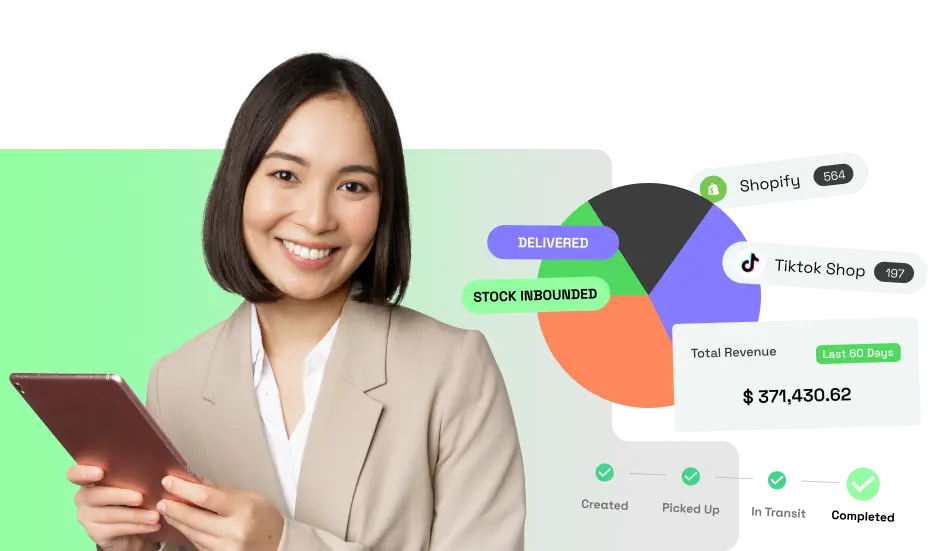The e-commerce industry is highly competitive and the chances of a business winning or shutting down is steep. In fact, startup businesses have a ninety percent failure rate.
So what causes these failures to happen? Here are some reasons why many e-commerce businesses fail:

Image from Pexels
Why do E-Commerce Businesses Fail?
1. Selling the Wrong Products
Are you selling a product that people want to buy?
Some e-commerce businesses get too excited about selling online– only to slap their face when they realize that the market for their products is too low.
Market research is the way to go so you can avoid selling the wrong products to your customers.
The following will help you determine the right product you can sell on your e-commerce store:
- Look into trends. Trends change all the time. Make sure you about the latest news. Google Trends can help you look into products people love searching for on the internet. You can also check various marketplaces and find the products many people buy.
- Know your market – If you have a specific product available, you probably already know to who you want to sell those products. But is the market enough? Or will they be interested in what you offer? Say, you have a line of beauty products (which many people love), but they aren’t sustainable and cruelty-free. Add your advocacy, and make sure people know that your product is helping the environment. It is crucial that you are fully aware of the wants and preferences of your target market. Knowing your market enables you to reach out to your target audience.
- Use your primary data from online surveys, telephone surveys, or focus groups- The data you can gather from these areas can guide you to make an informed decision. One example is if you are trying to know how much you earned this year than last year while using your previous strategy. The answer would base on your output, whether you need to revise your plan or stick to it.
- Allocating a budget for market research would be a nice move before starting a business. Knowing the latest trends will help get your products sold out.
2. Bad Pricing
Price vs. value is what new e-commerce owners and managers usually need help deciding which to prioritize to encourage people to buy.
The next time you decide on your product prices, take time to consider these options:
- If you have saturated competition, compete for pricing – if you look at marketplaces like Etsy, you will find that there are a lot of almost the same products offered by many shops. So what can encourage people to choose and buy from a specific shop? Affordable pricing. Lower prices are more encouraging when buyers see different options.
- If you have low competition, compete for value – people will spend money on the things they want. If you have a unique product with small competition, then it is alright to take your prices a little higher while investing time in making sure that they see the actual value of your products.
- If you think you’re selling a luxury item, you can sell it at an extremely high price. – this is also called ‘prestige pricing.’ E-commerce businesses selling luxury products aim to show the quality and experiences a customer has when choosing products to buy. Many buyers are charmed by words and phrases like ‘In Demand,’ ‘Most Popular,’ or ‘Limited Edition.’ So you can take advantage of this as long as you are confident that your products can live up to the expectations of your market.
- If you have tech products, change your pricing dynamically- the price of tech products eventually goes lower as newer versions of the product replace them. If recent tech products are, increase the price first, then lower it after some time. You can observe this pricing from tech businesses like the ones selling phones and cars.
These are just a few famous examples of a pricing policy you can adopt for products you’d like to sell on your e-commerce store without reinventing the wheel.
3. Trying to be everything for everyone.
The product you sell can only solve the pain points for some. While some may want your product, other shoppers may have different requirements and look for a different solution altogether. In your marketing plan, you jot in your target demographic: age group, gender, civil status, and location.
Focus on the market in which you want to sell your products. Narrow them down to the most specific demographics.
For example, if you are selling baby products, look into the demographics of parents, ages 25-40, mothers, fathers, and grandparents.
If you sell beauty products, don’t target people looking for baby products. Find people who are looking for cosmetics.
4. No Concrete Marketing Plan
Yes! Marketing involves more than just telling people what you are selling.
Here are the things you need to consider when creating a marketing plan:
- Marketing Goals – in every plan you make, you start with where you want to go and what you want to achieve with your business. For example, I want to earn $100,000 and more than 10,000 visitors to my e-commerce store. Whichever your heart desires, make sure it is sustainable, measurable, attainable, relevant, and time-bound.
- Situational Analysis – In this part, you must determine how far you have come to achieve your goals. In short, your current position tells you where you are. Are you meeting your goals? Does your marketing plan work with your target audience?
- Target audience – which demographics do you target? Like middle-income women who have cars, working mothers earning 250 dollars and up, or people living in your region. What product niche do you offer them?
- Strategies and measurement – what marketing tools and techniques do you want to use? Now that you use the internet, some plans would be email marketing and upgrading your reach through SEO. Next, how will you measure whether your strategy is working or not?
- Budget – Allotting a budget for marketing is essential, but how much you allocate for your marketing tools and strategies will make or break the success of your marketing campaigns. Although many free marketing tools are available online, you’d need to pay for premium access to get the most out of it.
- For example, if you’re running PPC Ads for a specific keyword in Google, you’d miss out a lot if you don’t get to bid on high-converting keywords. SEO will also be a considerable expense if you don’t optimize your e-commerce website.
- Implementation – This is the best part. How will you operate your marketing plan and put everything to play? Do you need to hire someone? If not, how many hours will you give to execute this strategy?
- The plan is to succeed with your e-commerce business. Twenty percent of startups may fail in the first year, and 70 percent may fail in the tenth year.
5. Content is not Optimized for Search Engines
Based on the survey in Statista, search advertising segment spending will grow to 200 billion dollars in the year 2023. Digital advertisers profit more through search advertising. For example, Google, as the lead search engine worldwide, has earned more than 28 percent of the total revenue for digital advertising in the United States.
Businesses are spending on digital advertising worldwide, estimated at more than 700 billion dollars, and still growing. You may ask why? Because millions of people are using the internet to know more about you and your product.
SEO or search engine optimization helps your website rank. Optimizing your website by publishing articles or blogs relevant to the customer’s search preference will help you land on the search engine’s first page, such as Google. More people will see the products that you sell.
Optimizing your SEO involves adding relevant keywords to your target audience and improving your site speed and readability of your blog.
6. Bad Website
Simple, you don’t post the details of your product, you only have one photo or sometimes none, hidden charges, your categories are all mixed up, and you have no product review.
Chin up, my friend. It’s not the end of the world.
Here are the best practices you can use to attract more website visitors.
- Product description – Add a complete description of your product. That includes the size, benefits, and technology behind it. For example, if you are selling jeans, ensure that the texture, color, size, and material of the jeans you are selling are in your product description.
- Product Photo – You add pictures from every angle. Remember to include the color disclaimer. You should include a person holding the item and showing how to use it. Also, add all the products to your package if you have them. For example, selling a tent, you should include all the photos inside the tent bag. Post more photos that your customers would likely decide to buy. You add at least more than 11 photos.
- Hidden Pricing – add all the pricing your customer needs before buying, especially the delivery charges. It could help you gain trust and return buyers. Be credible.
- Categories – Add correct labels and categories to the right product. It helps your customers to find the product that they need. Organize your items per product. For example, if you are selling a beauty product, categorize them within body care, facial care, nails, makeup, hair care, fragrance, and accessories or tools.
- Product Review – Let people post a product review on your website. It lets other visitors see that your product is legit and people are using it.
Google has thousands of video tutorials that can offer you help. Also, Use e-commerce tools to help you gain more visitors.
7. No Value Proposition
People buy value and not the product alone.
You won’t be making much if you earn something from your products that does not define your value.
Have value. For example, Louis Vuitton can sell their brand of bags for up to thousands of dollars. It is not only a bag. It has weight and reputation.
The same goes for Canva. They have strong competition, such as Crello, Visme, and Adobe Spark, to name a few. But despite the excellent competition, why are over 75 million people using Canva?
Canva is value-driven to help people discover their inner creativity. It is simple to use and requires minimal tech skills to get started. Through this, Canva hit the ground running by catering to small business owners who could rely on the tool to design flyers, banners, and more.
That’s what drives Canva, and it earned almost 1 billion dollars in 2021. These earnings came from recurring subscriptions. Now that’s value!
8. Fails to Scale
You are boiling another e-commerce mistake if you still need to scale your business.
Paul Graham, the co-founder of YCombinator, argues in his essay Startup=Growth that the essential thing the startup should do is grow. (Forbes, 2019)
Scaling means you are ready to meet the demands of the growing company. It includes additional staffing, cost-effective operational expenses, and more. The growth can be rapid that involves your time and capital. That is why it is essential to scale your business.
Yet, how would you scale your business in the first place? First, you need to build a strong foundation for your business.
How do you scale your business? Here’s how:
- Establish a marketing strategy – strategies help you win and succeed in your business. You choose the tools, niche, and how you will approach your target audience. Also, you evaluate if the strategy is working for you. If not, change it and start again.
- Invest in automation – automation helps you scale and leverage tasks using AI. It also allows your team to work efficiently and take advantage of your client’s needs. Examples are order notifications and email automation (welcome emails and order reminders), customer service FAQs, social media sharing, and more.
- Provide excellent customer support – your strategy would be client retention. You can do so if you have the best customer support. You are all ears on what the clients need and give it on time.
- Outsource fulfillment includes hiring a third party to handle packaging or order fulfillment. These tasks are tedious, and you may want them taken off your shoulders. So you can focus on more ways how to scale up.
- Optimize website – a website with fresh blogs, complete product details, and easy to use is what helps your customer stay and buy more products. Make it simple, my friend. Also, you optimize your website using your SEO.
- Improve your marketplace strategy – you get more people to visit your website if you improve your marketplace strategies.
- Listen to customers’ reviews and work on them – when you listen to your customer’s feedback, you know which areas you fail in so you can improve on them.
9. Weak Content
Create quality content by connecting with your audiences through how-tos and guides and educating them. You are not selling. You are guiding your audiences to the best product they need to use, which is your product.
Create eye-catching graphics and short-form videos such as Facebook reels, and put effort into providing genuine content. Also, add how your product can solve your customer’s problems. Such as taking away stains from a shirt – your product can take it off with three simple steps.
People will look into your content if you feature your behind-the-scenes work. Or products that support a cause.
So be unique and be yourself when you are creating your product.
Please write a blog relevant to your customers, which they encounter daily. It helps to reach out to your customers if you have relevant content. Since people are visual learners, add a nice photo. There are so many tools that you can use in the web for free.
10. Bad Customer Service
Your business grows when you have customers and when these customers keep coming back again.
Your customers may come in asking for help with your product, so be there to help them. You may give promos, free shipping gigs, and freebies. Giving promotional tickets or free shipping gigs helps alleviate your customer’s inconvenience. Also, people wanted to feel your love and your attention. That’s true!
Your customers will love it if they see that you also value them when they send you emails or chats.
So add a little twister and help them calm down. They might be your next big client. It is like you are handling a person’s psyche to help them see the better picture when using your product.
You should dive into adding chatbots to your customer service. In this way, your customers may have a timely response from your company if you need more workforce to answer all those queued requests.
11. Design Overwork
When you look into a design, what do you think?
Design can help your customers see what they need. Make your design simple and easy to access. Some people need help with colors and reading your texts.
You can put a little on your website. Just the thing that your client would need is best. That is photos of your products, an easy checkout process or payment, client reviews, and your contact details. Pop-ups are great, but too much is not necessary 1 or 2 is excellent.
Give yourself a break. Make it simple, my friend.
You will make an e-commerce mistake if you will not invest in making your website look good.
A simple website can attract more customers with easy-to-read texts, simple graphics, and more whitespace between your elements.
Adding space between your images and text can help your website look good by removing the clutters and adding the most important photos your customers would be looking at.
12. Lacks Call to Action
Another common e-commerce mistake is not adding a Call to Action button right after purchasing every item.
A call to action is how you usher your customers to buy your product. That means your product is the best solution to their problem. And that they can decide between buying it.
The call to action, or simply CAT, is to usher your customers to take action. Like saying, “Okay, you see how good it is, so buy it now and get the best deals.” It triggers your customers to make that informed decision to take action.
A call to action is a confirmation of your customer’s thoughts about your product that they are eager to buy. Tell your audience where and what to expect when purchasing the product, and then push them to make a sale. Sample call-to-action phrases are, buy now and get a 50 percent discount on your next purchase. Or you can make it simple – buy now.

Image from Pexels
What Are You Doing to Make a Difference?
Sometimes people fail, and businesses do so. But Steve Jobs and Elon Musk failed when they started, so what does it make you then? Do you know what they did? They never gave up. Never!
If you are a person who doesn’t want to give up, what is your clarity?
It may be clear to you that you wish to end sickness in the world, or it is clear to you that you want accessible education for all. Whatever that clarity may be, a note to yourself, you are creating a difference in everything you do that makes the world a better place to live. Communicate your clarity with your best photo, and edit it using remove bg to remove eye-sore backgrounds.
You may earn billions of dollars from e-commerce, but mistakes may come, be glad that there are mistakes you can learn from and strive to improve.
Also, some people came first before us. You should understand what they did that made their strategy successful.
So what is your next plan? Make a difference now!

About the author
Faith Bacani, Removal.AI
Faith is a mother of three and loves to write about blogging, social media, e-commerce, and photography. Her daily inspiration came from her three loving children. She loves to cook and take photographs whenever she is free. She is a nurse by trade, but she prefers to write.











